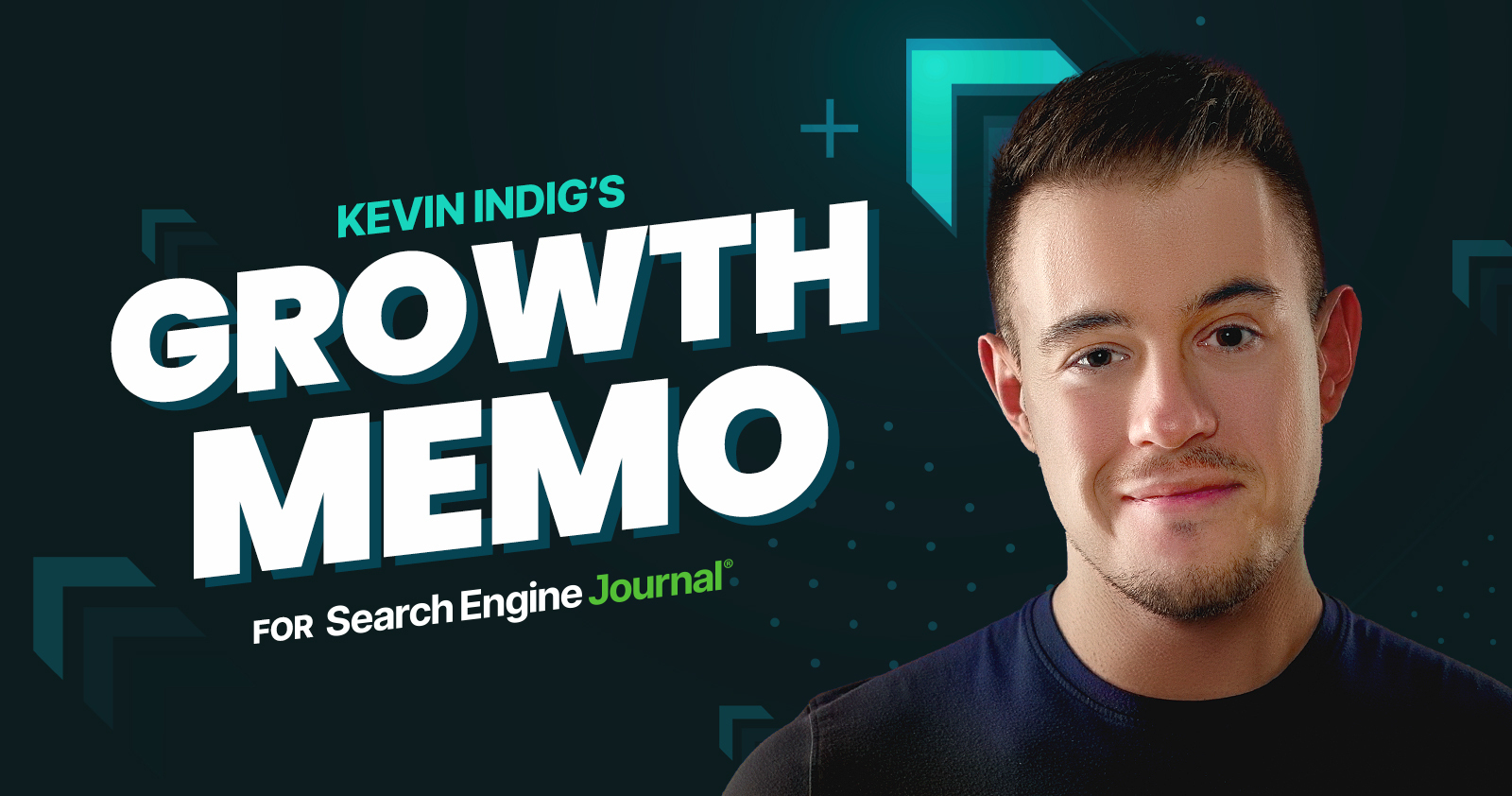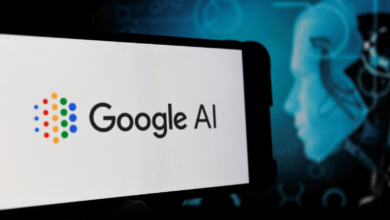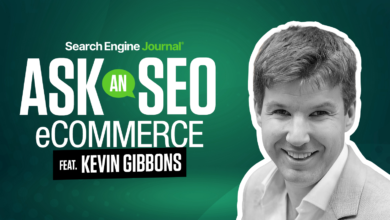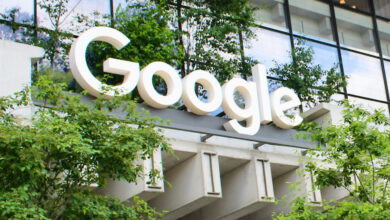Testing Google’s Post-AIO Traffic Claims
Last week, in Part 1 (find it here), we examined whether Google’s AI Overviews are actually changing how people use Search.
The data revealed that while users visit Google more frequently with AI Overviews, they:
- Spend less time per visit.
- Aren’t crafting significantly longer or more complex queries.
Now we turn to an even more consequential question for the web ecosystem:
Is Google delivering its promise to “grow traffic to the ecosystem” through AI Overviews?
This claim has been repeated by Alphabet CEO Sundar Pichai in multiple forums:
- “In general, we find it’s both overall increasing usage, and when we look at it year on year, we have been able to grow traffic to the ecosystem.”1
- “People are using it to Search in entirely new ways … and getting back the best the web has to offer.”2
For website owners, publishers, and content creators, this is the million-dollar question.
Plus, if AI Overviews truly drive more traffic to the web, they represent an evolution of Search.
But if they don’t drive more traffic to the web, they potentially represent a significant disruption to the relationship between Google and the open web.
Let’s examine what the data actually shows about traffic patterns before and after the introduction of AI Overviews.
As a reminder, I partnered with Similarweb to analyze over 5 billion search queries across multiple markets. And here’s what this data set includes:
- Over 5 billion search queries and 20 million websites.
- Average time on site, searches per session, and visits per user on Google.com – both in total and comparing the UK, U.S., and Germany.
- A comparison of keywords with and without AI Overviews that analyzes searches per session, average time spent on Google, and zero-click share.
- Page views and time spent on Google.com for keywords showing AI Overviews vs. keywords without AI Overviews.
- Average query length for the UK, US, and Germany.
Claim: We Have Been Able To Grow Traffic To The Ecosystem
Data from my analysis shows this claim is not correct.
In fact, my study reveals AIOs raise zero-click share from 72% → 76%.
Users who leave Google do engage more, as mentioned in Part 1, but a larger share of queries never “get back to the web.”
It’s important to pause here.
Look at how many keywords (60% at the lowest point, shown by the black line above) lead to zero-click searches, even when Google doesn’t show an AI Overview.
Many keywords that grew in zero-clicks after AI Overviews officially launched in May 2024 also had zero-clicks before the launch.
But after the rollout, we see a clear increase in zero-clicks for AIO keywords and a plateau in November 2024 at 76% (up from 71.4% in April 2024).
The share of zero-clicks also grew for non-AIO keywords, which can be explained by SERP Features like Featured Snippets.
For example, Semrush shows a clear upward trend for the number of videos that show up for terms Wikipedia, one of the largest sites on the web, ranks for.
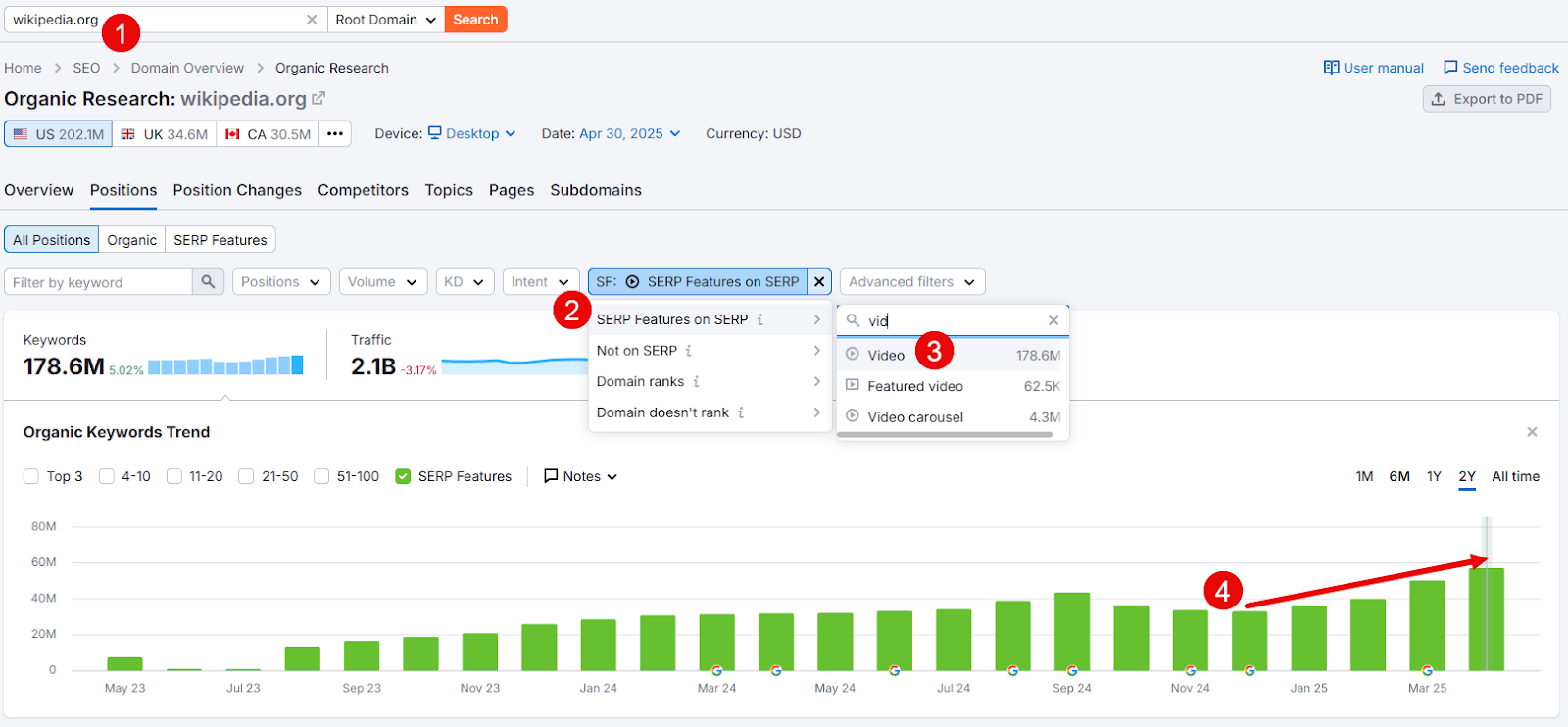 Image Credit: Kevin Indig
Image Credit: Kevin IndigAs a result of more SERP features, the gap in zero-click share between keywords showing AIOs vs. not showing AIOs has closed from 15.4% in May 2024 to 11.4% in February 2025.
Here’s another example that challenges Pichai and the Google team’s claims:
Search queries without AI Overviews result in twice as many pageviews as those with AI Overviews.
In that sense, AIOs send less traffic to the ecosystem overall, and it leads to fewer pageviews. This is a death blow for publishers who rely on ad impression volume.
To be fair, one could argue in favor of Pichai’s point here in that pageviews from AIO keywords have grown 21.5% since the rollout in May 2024, compared to just 1.3% growth for keywords without AI Overviews during the same period (until November ‘24, after which they drop).
So, you could look at that trend and say, “Pageviews from AIO queries have grown,” but that omits a lot of important context.
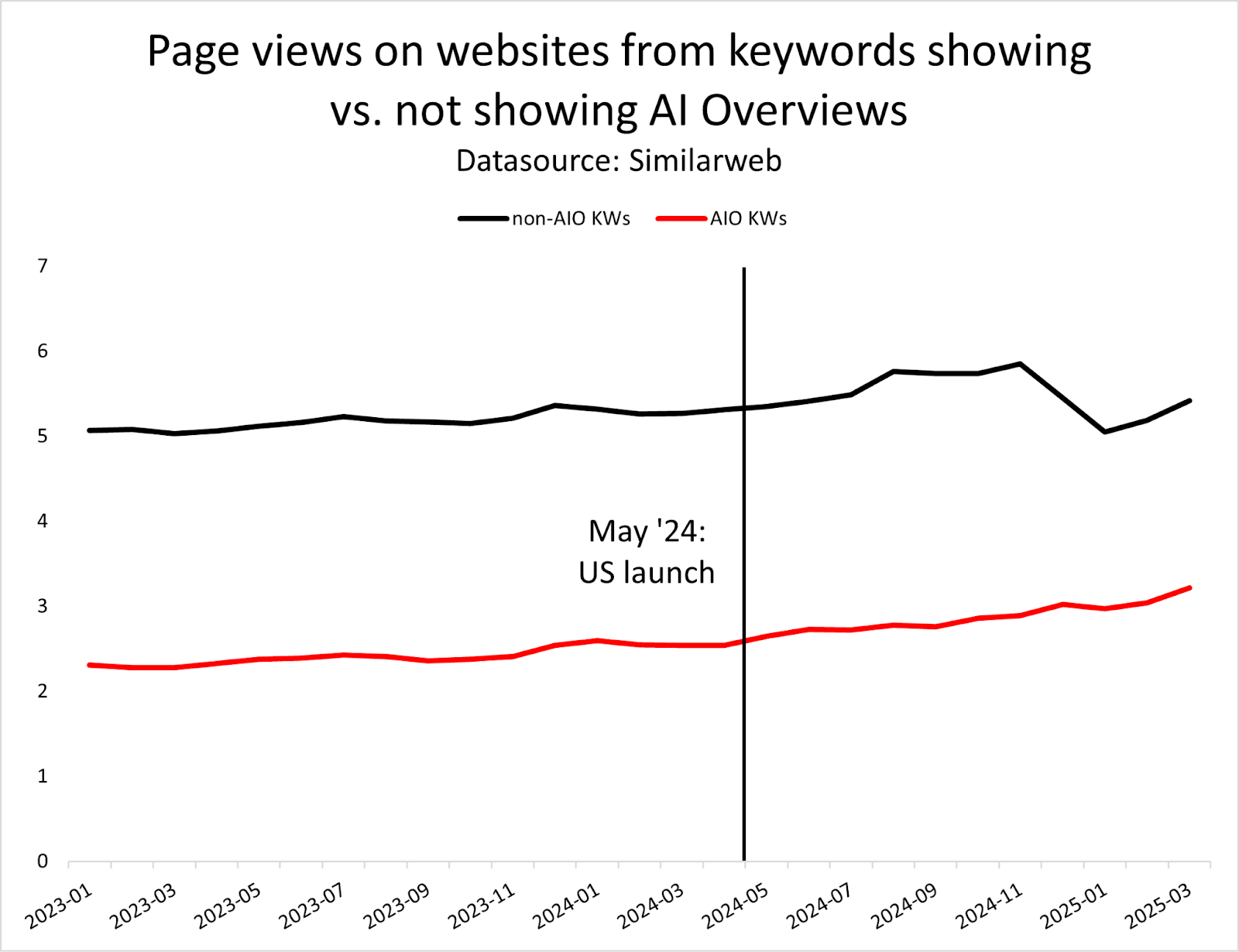 Image Credit: Kevin Indig
Image Credit: Kevin IndigVerdict: These Claims Aren’t Telling The Full Truth – At Best
In Part 1, I came to the following conclusion:
When we examine the data closely, a clear pattern emerges: Google’s claims about AI Overviews fundamentally changing how we search are largely overstated.
Yes, users visit Google more frequently, but they’re spending less time per visit and not crafting significantly longer or more complex queries. This suggests AI Overviews are creating a “quick answer” behavior pattern rather than deeper engagement with search.
And Part 2 of my analysis confirms that pattern.
Yes, queries are creeping longer, and AIO-derived clicks are high-quality.
However, zero-click growth contradicts the claim that AIO consistently sends more traffic “back to the web.”
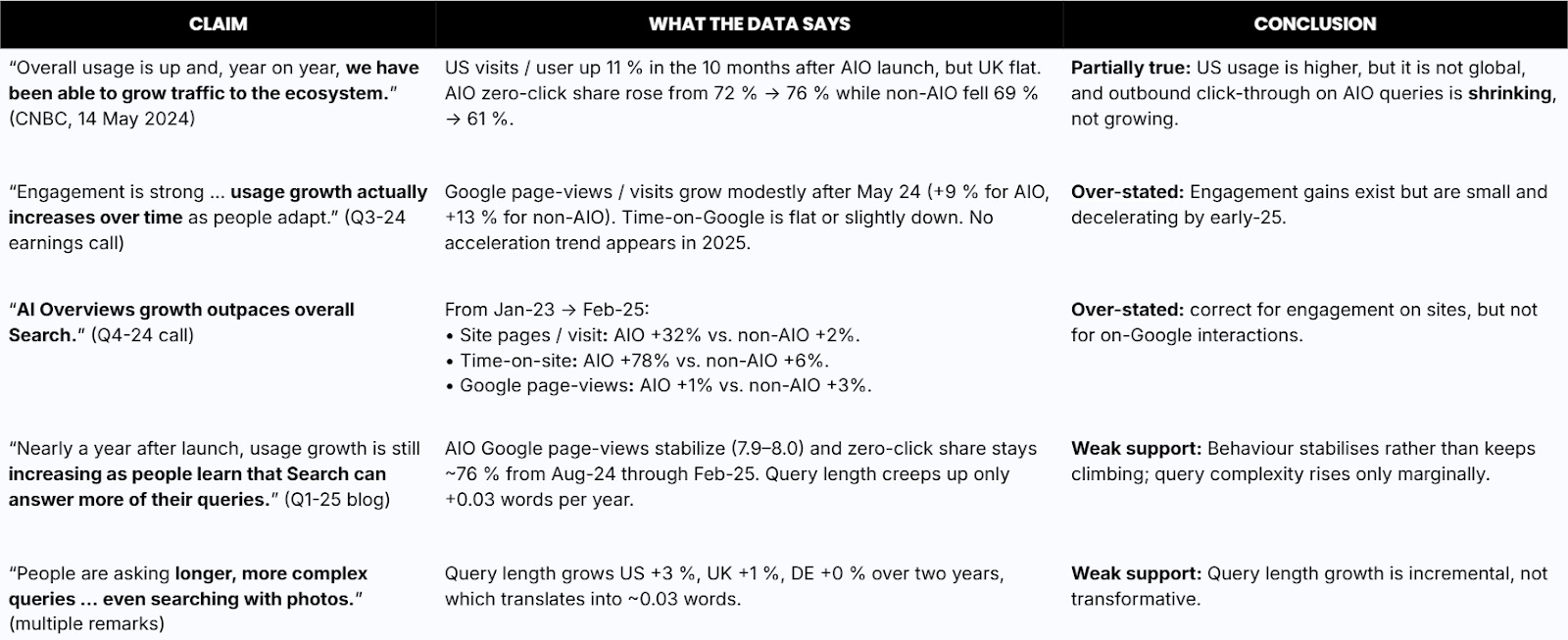 Image Credit: Kevin Indig
Image Credit: Kevin IndigThe rise in query length is incremental – not a wholesale shift to “entirely new” behavior – and increased zero-click resolution means many searches stop at Google rather than reaching “the best the web has to offer.”
Make sure to subscribe because next week, I’m publishing the first-ever AIO usability study to complement the quantitative data I’ve published over the last five months with qualitative insights.
Let me tell you … this will change your model of Search and LLM optimization.
Boost your skills with Growth Memo’s weekly expert insights. Subscribe for free!
2 Google I/O 2024: An I/O for a new generation
Featured Image: Paulo Bobita/Search Engine Journal
